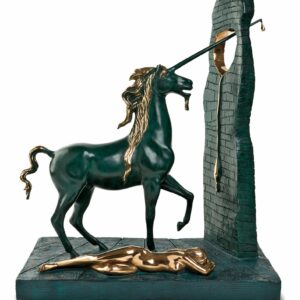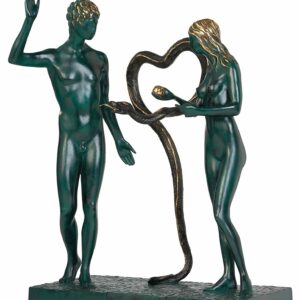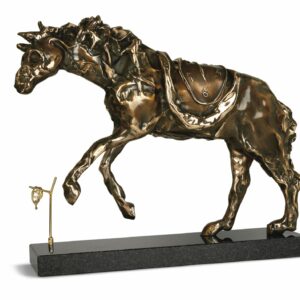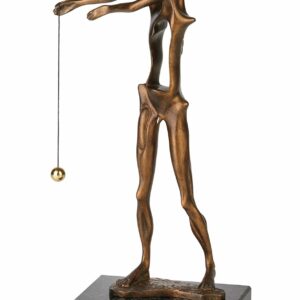In this sculpture, Dalí transforms the image of a grand piano into a surreal dancing object.
The traditional wooden legs of the piano are replaced with actual female legs, booted feet and skirted frills. By adding these unique, surprising features, Dalí transforms the mundane and inanimate into an animated object, typical of Dalí’s Surrealism. The result is a lively ensemble that can dance as well as play, which could only exist in Dalí’s surreal universe. Adding human characteristics to objects is typical of Dalí’s oeuvre; he explored this notion in particular with furniture and musical instruments.
The addition of the golden female figure gives the sculpture an elegant and graceful dimension. Her ballet dancer pose suggests a classical performance which contradicts with the bawdy music hall dance implied by the piano’s frilled petticoats. Living in Paris during the Roaring Twenties, Dalí was influenced by the flourishing music and dance scene during this period.
Dalí used the image of the piano consistently over the years in several of his paintings and real life piano’s in several of his installations: a grand piano in the sea in Port Lligat, one hoisted from a tree in the garden of Caresse Crosby, his friend and patron at Hampton Manor, Virginia, USA. He also chose the figure of the piano joined with a female body as part of his installation Dream of Venus for New York’s World Fair in 1939.
Please contact us here for more information.
Related products
-
Unicorn
Salvador Dali -
Adam and Eve
Salvador Dali -
Horse Saddled with Time
Salvador Dali -
Homage to Newton
Salvador Dali






